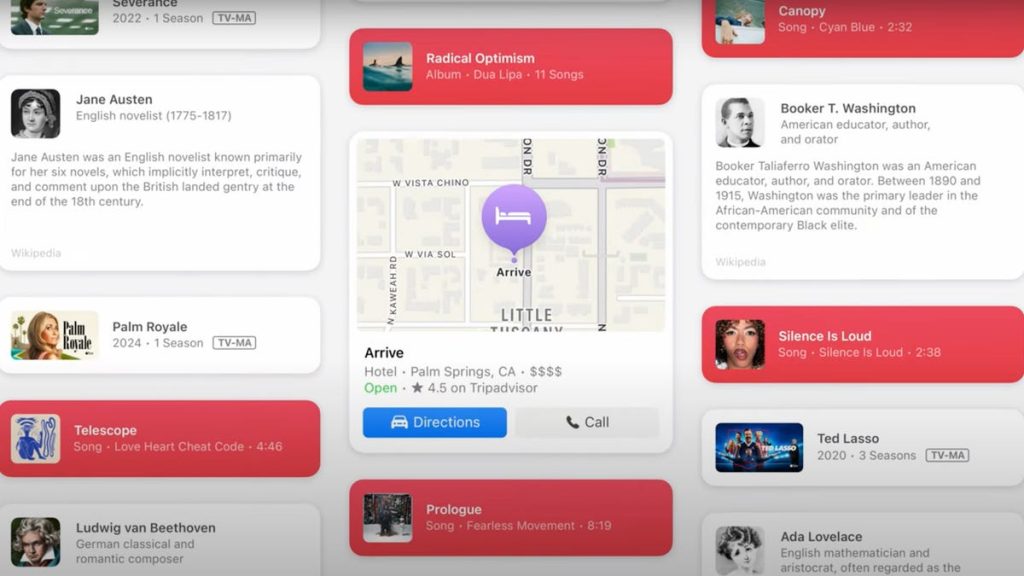Apple unveiled Safari Highlights at its WWDC 2024 developer conference, a browser feature that uses machine learning to display relevant information at the top of certain web pages. This new feature is part of Apple’s push into generative AI, highlighted by the announcement of the Apple Intelligence framework. With this framework, Apple aims to power text summaries, image personalization, and a revamped version of Siri that is more conversational and personal. Additionally, Apple has partnered with OpenAI to bring the popular ChatGPT chatbot to the iPhone with iOS 18 later this year.
Safari Highlights works by displaying directions, summaries, and links related to the people, music, movies, and TV shows you are researching. The feature gathers information from sources like Apple Music, Apple TV Plus, and Wikipedia to provide users with relevant content as they browse. For example, if reading about Dua Lipa, Safari Highlights might recommend an album from Apple Music, or if exploring a TV show like Palm Royale, it could display the show’s Apple TV Plus page. Apple has also introduced Safari Summaries for its Reader app, which removes distractions, adds a table of contents and summary, and expands videos to fill the window.
In comparison to Apple’s Safari Highlights, Google’s AI Overviews were designed to offer summaries at the top of search engine results pages, providing quick answers to user queries. However, Google encountered issues with AI Overviews, resulting in bizarre responses and the feature being scaled back. Google’s AI systems, including Gemini and other chatbots, have faced challenges with AI hallucinations, where false or misleading information is presented as fact due to flawed training data or algorithmic errors. Despite this setback, Google continues to refine its AI models to provide more accurate and personalized responses.
AI hallucinations, such as those experienced by Google’s AI systems, can lead to the presentation of false or misleading information as fact, causing confusion for users relying on these systems. Google’s Gemini model, designed for AI Overviews, struggled with understanding user intent and providing relevant summaries, leading to the scaling back of the feature. Google has since worked on improving its AI systems and training data to reduce the occurrence of hallucinations and provide more accurate information to users. These challenges highlight the complexities and limitations of generative AI models in delivering accurate and reliable responses.
Despite the challenges faced by Google with AI Overviews, companies like Apple are pushing forward with their own generative AI initiatives, introducing features like Safari Highlights to enhance user experiences while browsing the web. By leveraging machine learning and partnerships with AI providers, tech companies aim to improve the functionality and capabilities of their AI systems to provide more personalized and relevant information to users. As the field of generative AI continues to evolve, companies will need to address issues like AI hallucinations and refine their algorithms to ensure the accuracy and reliability of their AI-powered features.


